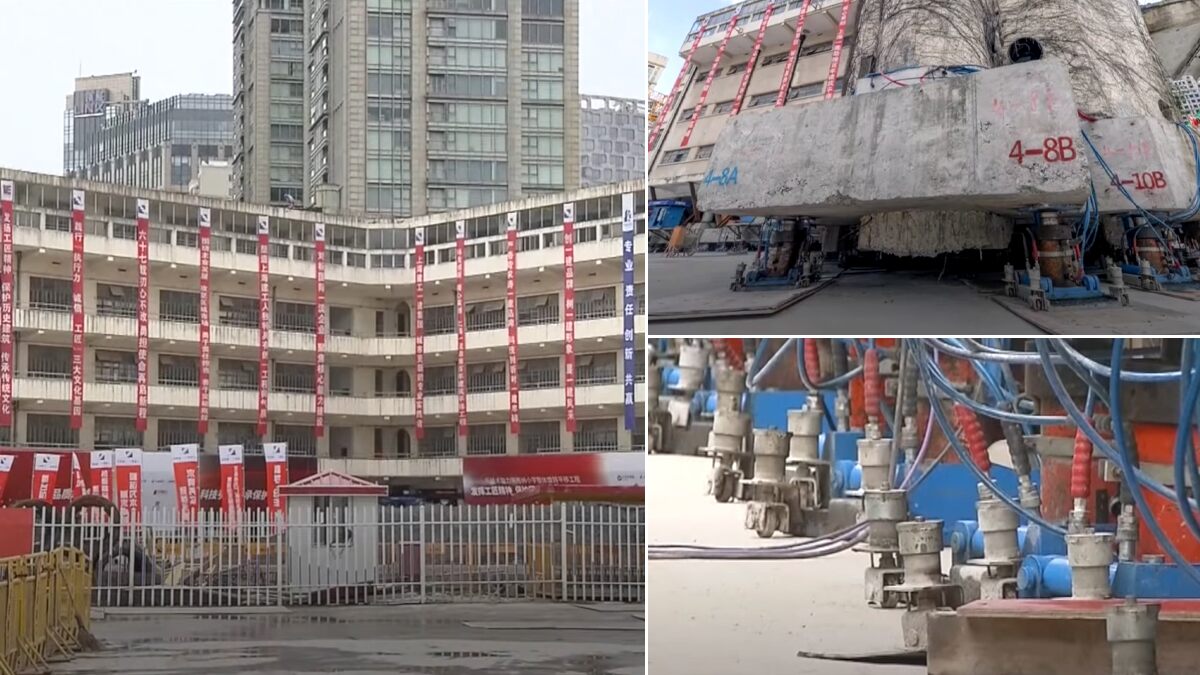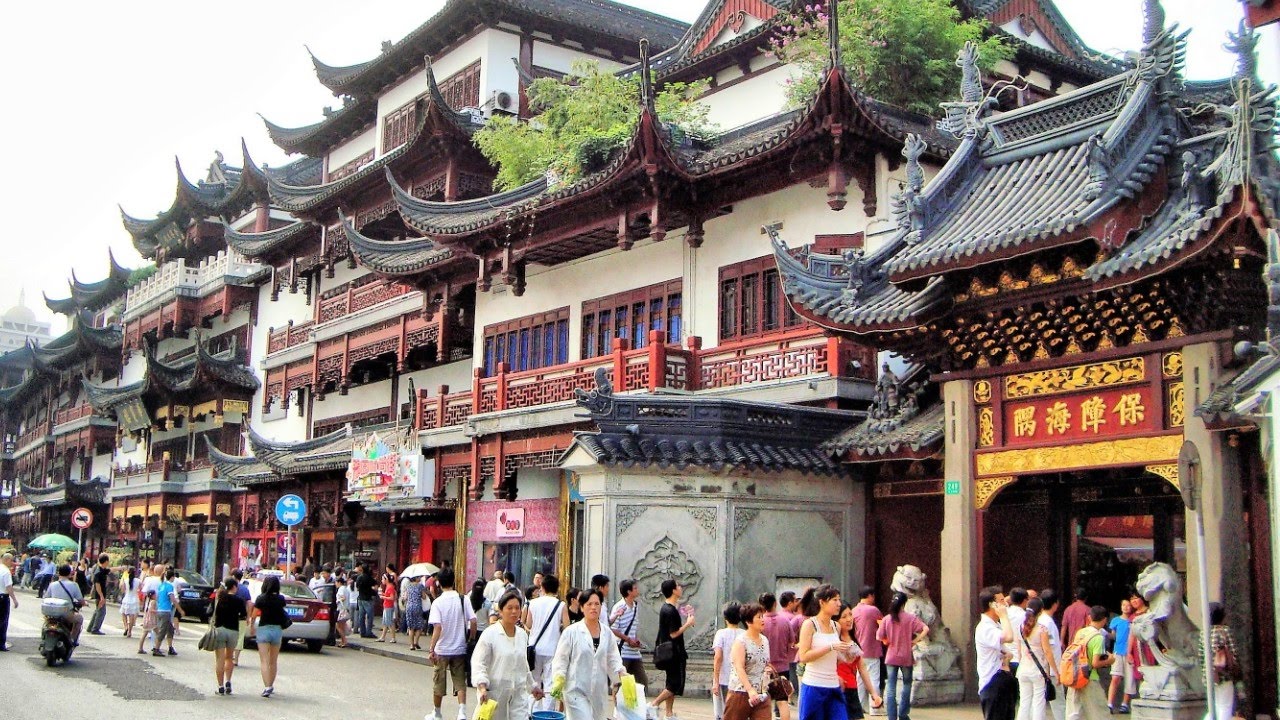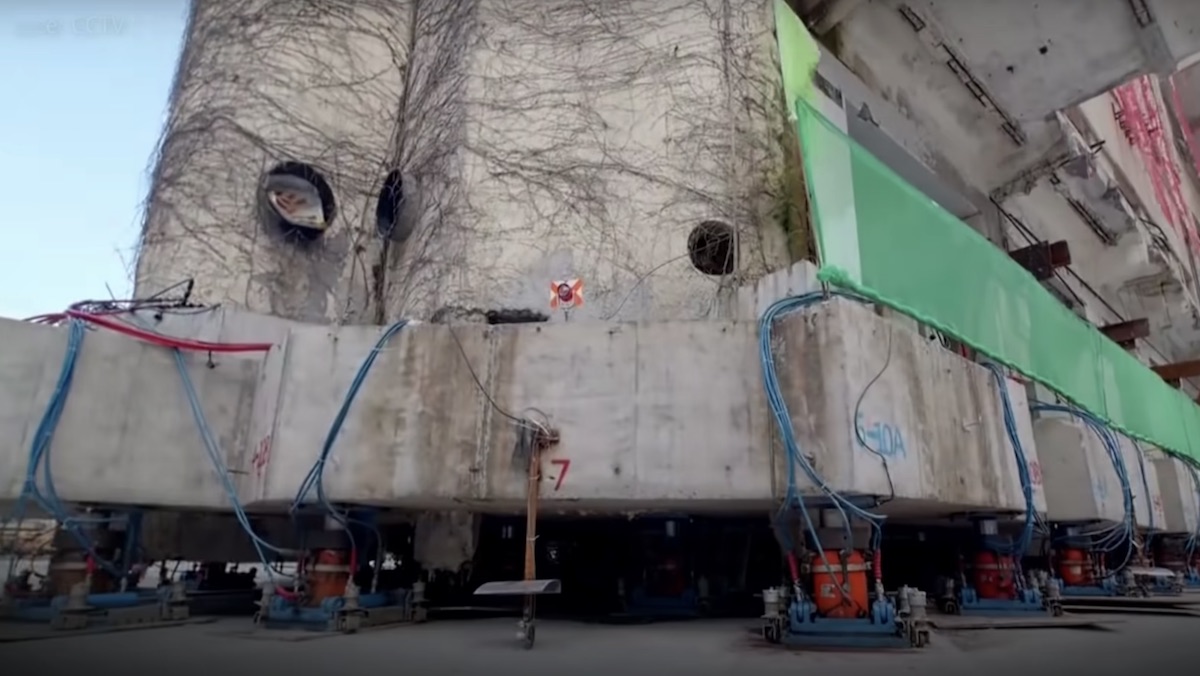In Shanghai latest effort to preserve historic structures, engineers attached nearly 200 mobile supports under the five-story building, according to Lan Wuji, chief technical supervisor of the project.
The supports act like robotic legs. They’re split into two groups which alternately rise up and down, imitating the human stride. Attached sensors help control how the building moves forward, said Lan, whose company Shanghai Evolution Shift developed the new technology in 2018.
“It’s like giving the building crutches so it can stand up and then walk,” he said.
According to a statement from the Huangpu district government, the Lagena Primary School was constructed in 1935 by the municipal board of Shanghai’s former French Concession. It was moved in order to make space for a new commercial and office complex, which will be completed by 2023.
Workers had to first dig around the building to install the 198 mobile supports in the spaces underneath, Lan explained. After the pillars of the building were truncated, the robotic “legs” were then extended upward, lifting the building before moving forward.

Over the course of 18 days, the building was rotated 21 degrees and moved 62 meters (203 feet) away to its new location. The relocation was completed on October 15, with the old school building set to become a center for heritage protection and cultural education.
The project marks the first time this “walking machine” method has been used in Shanghai to relocate a historical building, the government statement said.
Shanghai has arguably been China’s most progressive city when it comes to heritage preservation. The survival of a number of 1930s buildings in the famous Bund district and 19th-century “shikumen” (or “stone gate”) houses in the renovated Xintiandi neighborhood have offered examples of how to give old buildings new life, despite some criticism about how the redevelopments were carried out.

The city also has a track record of relocating old buildings. In 2003, the Shanghai Concert Hall, built in 1930, was moved over 66 metes (217 feet) to make way for an elevated highway. The Zhengguanghe Building — a six-story warehouse, also from the 1930s — was then shifted 125 feet (38 meters) as part of a local redevelopment in 2013.
More recently, in 2018, the city relocated a 90-year-old building in Hongkou district, in what was then considered to be Shanghai’s most complex relocation project to date, according to state-run news agency Xinhua.
There are a few ways to go about moving a building: It can slide down a set of rails, or be pulled along by vehicles, for instance.
But the Lagena Primary School, which weighs 7,600 tons, posed a new challenge — it’s T-shaped, whereas previously relocated structures were square or rectangular, according to Xinhua. The irregular shape meant that traditional methods of pulling or sliding may not have worked because it may not have withstood the lateral forces placed on it, said Lan.

The building also needed to be rotated and follow a curved route to its relocation instead of just moving in a straight line — another challenge that required a new method.
“During my 23 years of working in this area, I haven’t seen any other company that can move structures in a curve,” he added.
Experts and technicians met to discuss possibilities and test a number of different technologies before deciding on the “walking machine,” Xinhua said.
Lan told CNN he couldn’t share the exact cost of the project, and that relocation costs will differ case by case.
“It can’t be used as a reference, because we have to preserve the historical building no matter what,” he said. “But in general, it’s cheaper than demolishing and then rebuilding something in a new location.”














